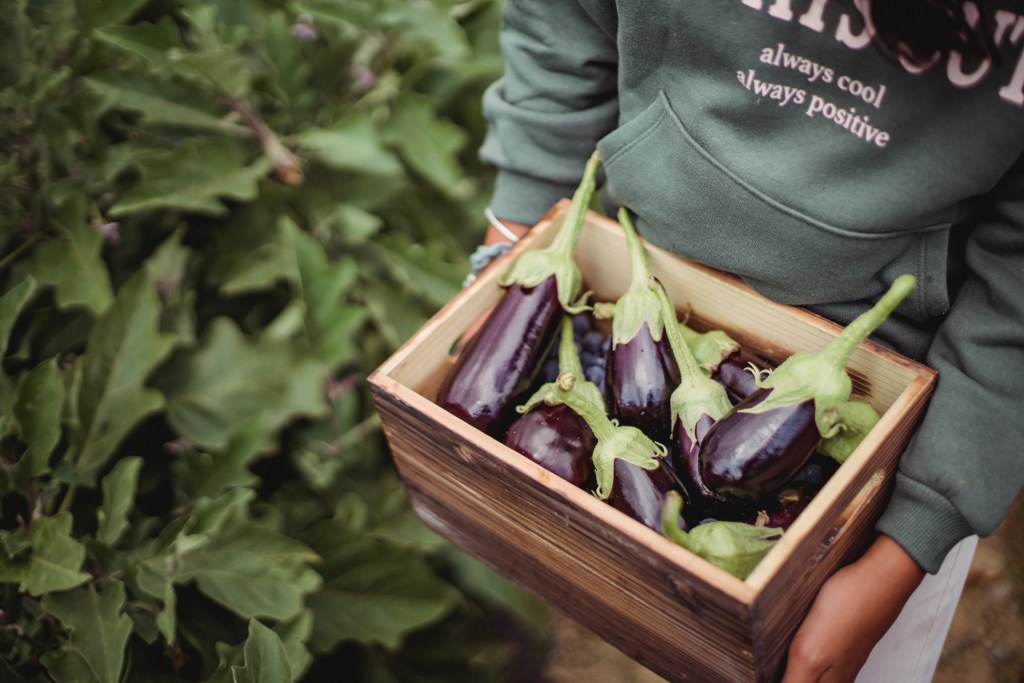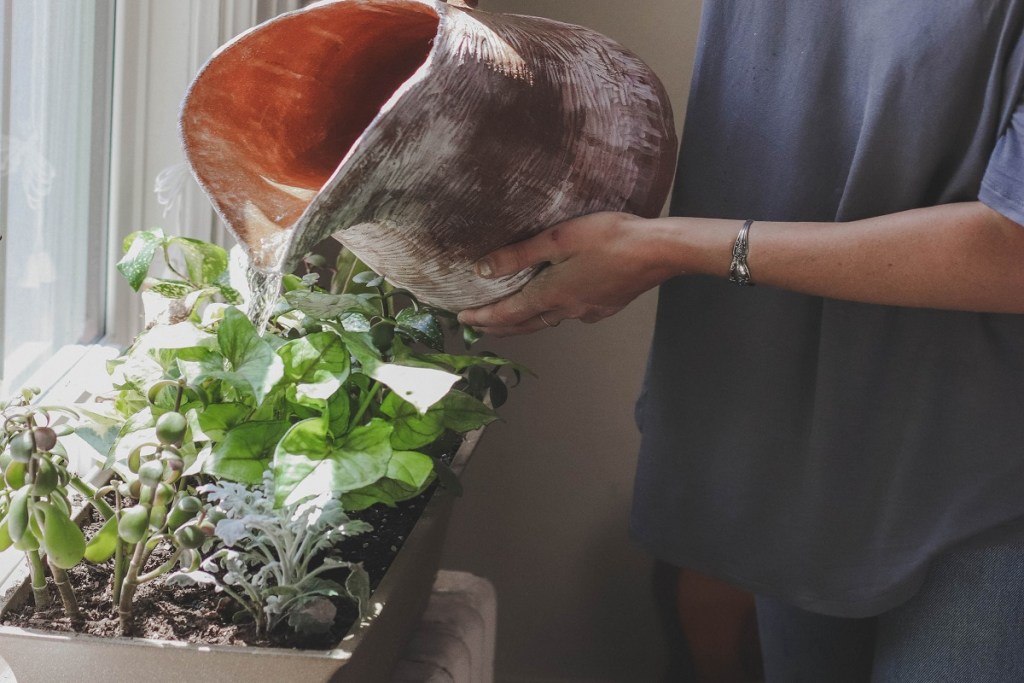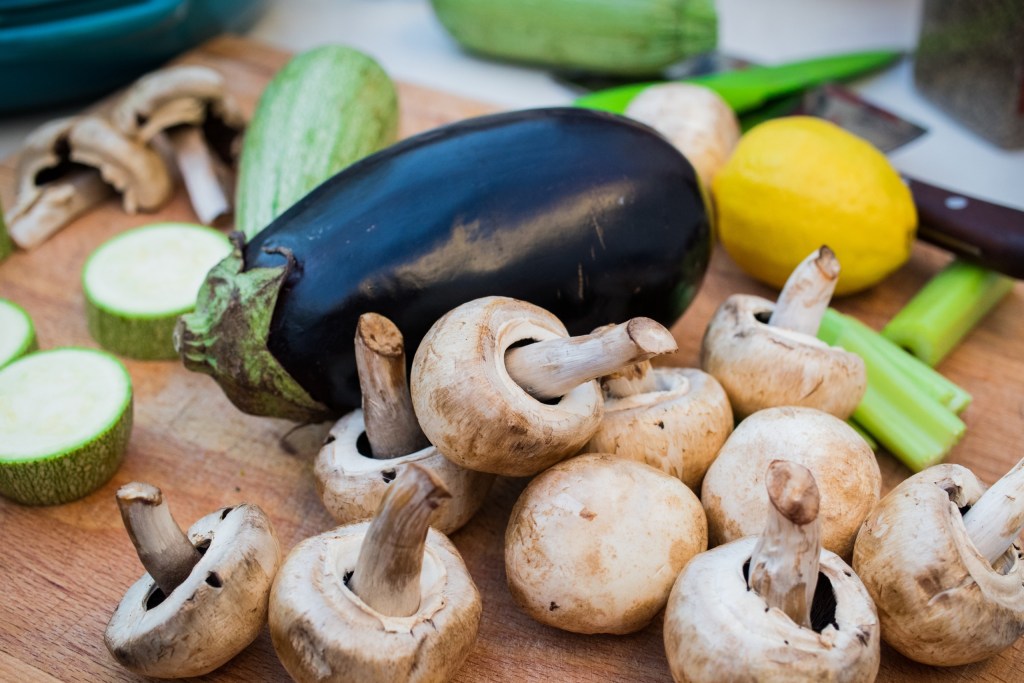Eggplant is one of the easiest plants to grow. The flowers are beautiful (we think they’re pretty enough to be used as ornamental plants), and the fruit itself can even be thought of as a modern work of art. For the reasons above, some people like to grow eggplant in containers specifically because that makes it easy to carry them to different locations and view them from all sides.
Although it’s relatively simple to do, growing eggplant from tiny little seeds to plants requires a bit of care. There are a few types from which to choose, as well. In fact, if you buy them as seeds, you have the opportunity to grow some types that you wouldn’t be able to purchase from a nursery.

Growing the seeds
Some people don’t intend to use their eggplants as ornamental plants and actually want to transplant their seedlings from their containers to the garden. If that’s you, then you’ll want to start the seeds anywhere from eight to 10 weeks before it frosts for the last time in your region. You’ll want to take as much advantage of the growing season as possible. That’s true even though you do have a bit of flexibility with container-grown eggplant.
Foolproof planting instructions
- Take some cell packs or small pots filled with homemade or bagged, high-quality seed-starting mix.
- Put a few seeds in each pot or cell and then cover them with about one quarter inch of dirt.
- Water your seeds using a spray bottle to simply moisten the soil.
- Put the containers in an area with a temperature of around 75° F. — the ideal degree of warmth for your seeds’ germination.
- An easy way to maintain this temperature this is simply putting a layer of plastic wrap or a plastic bag over the top of the containers and then placing them on a heat mat.
- Leave the containers like this for about one to two weeks. Check periodically to see if there is condensation on the underside of the plastic covering.
- If there’s not, then you need to spray the soil with your spray bottle.
- After you see the beginnings of sprouts, uncover the containers and put them in an area where they’ll get the maximum amount of sunlight possible.
When the plant is large enough, you’ll want to transfer it from the container it grew in as a seedling to a larger pot. However, you should fill the new pot with the same mix you germinated the seeds in. You can also move the plants outside and allow them to sit in the sun for a few hours as the days become warmer. Once the days are regularly 70° F., you can move the plants outside for good.

Care notes
While you don’t want the soil of your eggplant containers to dry out too quickly, you do want the soil to be fast draining. Remember that light soil tends to dry out pretty fast, so you may have to water more than once per day. If the soil dries out at all, it can mean that the eggplant’s fruit won’t grow to full potential.
To reiterate then, you need to check the soil and ensure that it’s kept moist. To keep it in that condition without overwatering, invest in mulch. That mulch can consist of wood chips or straw, just as long as it covers the soil and helps prevent it from drying out. Once your plants are no longer seedlings, you’ll want to feed them every other week during the growing season. Do this with diluted, liquid fertilizer.
Invest in a high-quality soil mix because eggplant is susceptible to certain types of wilting pathogens, and those disease causing organisms are common to regular gardening soil. Eggplants are also vulnerable to flea beetles. However, as long as you’re using sterile potting soil and are growing the plant in containers, this isn’t likely to be too big of an issue.

Harvesting and eating your eggplant
When the fruit of the eggplant is full, has little give to it when squeezed, and has a glossy skin … it’s time to pick it. In fact, pick it just a little before it matches the description above. As for eating eggplant, well … there are so many recipes on the internet you could likely sit for hours trying to read them all.
A great, simple way to eat eggplant that’s full of flavor is to roast it alongside some steaks! Cut the pieces into little squares and toss them on the grill. Throw on a dash of olive oil, salt, and pepper, and you’ll be good to go!
Growing eggplant in containers is a fun and simple way to insure a beautiful harvest that’s good enough to eat. With a bit of patience and a little know-how, you’ll have beautiful eggplant flowers and veggies in no time.
Editors' Recommendations
- A beginners guide on what to grow in your greenhouse for a thriving garden
- Small greenhouse tips: 5 ways to make the most of limited space
- Do you need a fence for your garden? What you need to know before deciding
- What you need to know about growing sugar snap peas in containers
- How to build an outdoor kitchen on a budget and create the ideal cooking space


